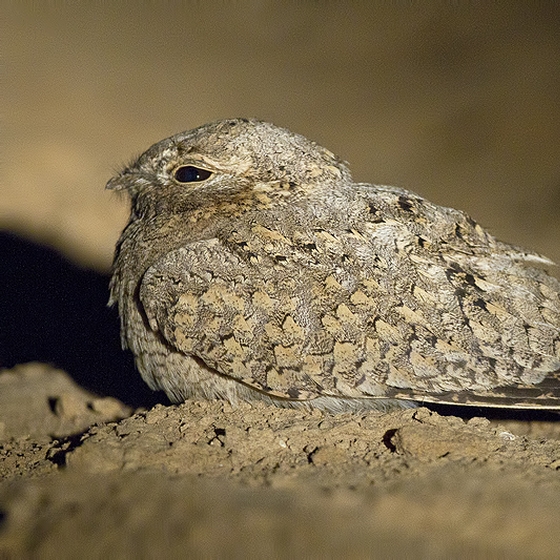Egyptian Nightjar

Introduction
The first record (one shot near Mansfield, Nottinghamshire in 1883) must be one of the few such events commemorated by a stone at the location.
The two rather disjunct breeding populations of this species are located in north-west Africa, and from Kazakhstan to Sinai. It is thought that both races winter in Africa, within the Sahel.

Key Stats
Status and Trends
Conservation Status
Population Size
Population Change
Population trends of this scarce species are not routinely monitored.
Distribution
This vagrant has not been recorded in the UK for many decades and as such cannot be mapped.
Distribution Change
This vagrant is too rarely reported to map distribution change.
Seasonality
This species has been too rarely reported to BirdTrack during 2011–22 to properly assess seasonality.
Movement
Britain & Ireland movement
Biology
Survival and Longevity
Survival is shown as the proportion of birds surviving from one year to the next and is derived from bird ringing data. It can also be used to estimate how long birds typically live.
Classification, names and codes
Classification and Codes
- Order: Caprimulgiformes
- Family: Caprimulgidae
- Scientific name: Caprimulgus aegyptius
- Authority: MHK Lichtenstein, 1823
- BTO 5-letter code: EGYNI
- Euring code number: 7810
Alternate species names
- Catalan: enganyapastors d'Egipte
- Czech: lelek svetlý
- Danish: Ørkennatravn
- Dutch: Egyptische Nachtzwaluw
- Estonian: kõrbe-öösorr
- Finnish: aavikkokehrääjä
- French: Engoulevent du désert
- German: Pharaonenziegenmelker
- Hungarian: sivatagi lappantyú
- Icelandic: Niðfari
- Italian: Succiacapre isabellino
- Latvian: Egiptes vakarlepis
- Lithuanian: egiptinis lelys
- Norwegian: Ørkennattravn
- Polish: lelek egipski
- Portuguese: noitibó-do-deserto
- Slovak: lelek žltkavý
- Slovenian: egipcanska podhujka
- Spanish: Chotacabras egipcio
- Swedish: ökennattskärra

